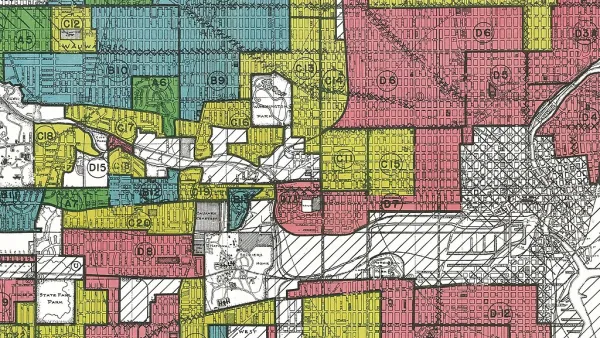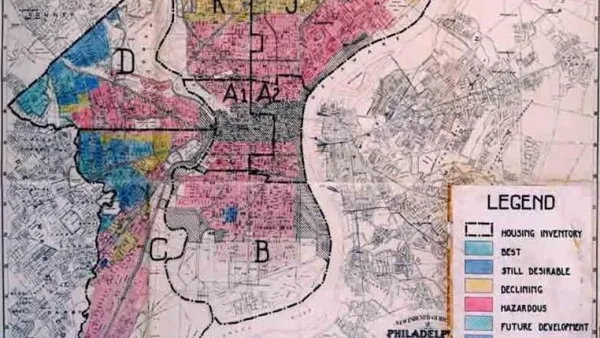According to a new report detailing discriminatory lending in Chicago, people in majority-white neighborhoods continue to receive more loans, and in greater amounts, than people in majority-Black and majority-Latino areas.

New analysis from WBEZ and City Bureau shows the massive disparity in lending to residents of white neighborhoods compared to residents of black and Latino neighborhoods in Chicago. Linda Lutton, Andrew Fan, and Alden Loury call the practice "Modern-day redlining," describing "a pattern that locks residents out of home ownership, deprives communities of desperately needed capital investment and threatens to exacerbate racial inequities between neighborhoods."
When WBEZ and nonprofit newsgroup City Bureau reviewed 168,859 home loans between 2012 and 2018 made by banks and non-bank mortgage companies, they found that of the $57.4 billion loaned, 68.1% of cash funded people in majority-white neighborhoods with only 8.1% going to majority-black neighborhoods and 8.7% ending up in majority-Latino neighborhoods. Their report notes that while higher home prices in majority-white neighborhoods can explain part of the imbalance, the fact that "financial institutions made four times more loans in Chicago’s white neighborhoods than they did in black or Latino areas" obviously points to a much larger problem.
According to the authors, injecting money into neighborhoods in the form of home loans is a fundamental way to impact the health of communities and the quality of life of its residents.
FULL STORY: Where Banks Don’t Lend

National Parks Layoffs Will Cause Communities to Lose Billions
Thousands of essential park workers were laid off this week, just before the busy spring break season.

Retro-silient?: America’s First “Eco-burb,” The Woodlands Turns 50
A master-planned community north of Houston offers lessons on green infrastructure and resilient design, but falls short of its founder’s lofty affordability and walkability goals.

Delivering for America Plan Will Downgrade Mail Service in at Least 49.5 Percent of Zip Codes
Republican and Democrat lawmakers criticize the plan for its disproportionate negative impact on rural communities.

Test News Post 1
This is a summary

Test News Headline 46
Test for the image on the front page.

Balancing Bombs and Butterflies: How the National Guard Protects a Rare Species
The National Guard at Fort Indiantown Gap uses GIS technology and land management strategies to balance military training with conservation efforts, ensuring the survival of the rare eastern regal fritillary butterfly.
Urban Design for Planners 1: Software Tools
This six-course series explores essential urban design concepts using open source software and equips planners with the tools they need to participate fully in the urban design process.
Planning for Universal Design
Learn the tools for implementing Universal Design in planning regulations.
EMC Planning Group, Inc.
Planetizen
Planetizen
Mpact (formerly Rail~Volution)
Great Falls Development Authority, Inc.
HUDs Office of Policy Development and Research
NYU Wagner Graduate School of Public Service





























